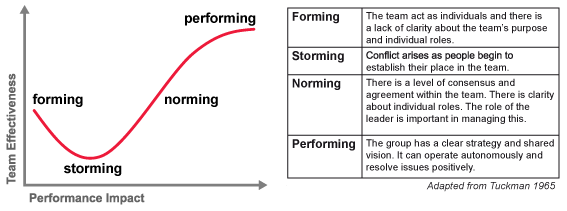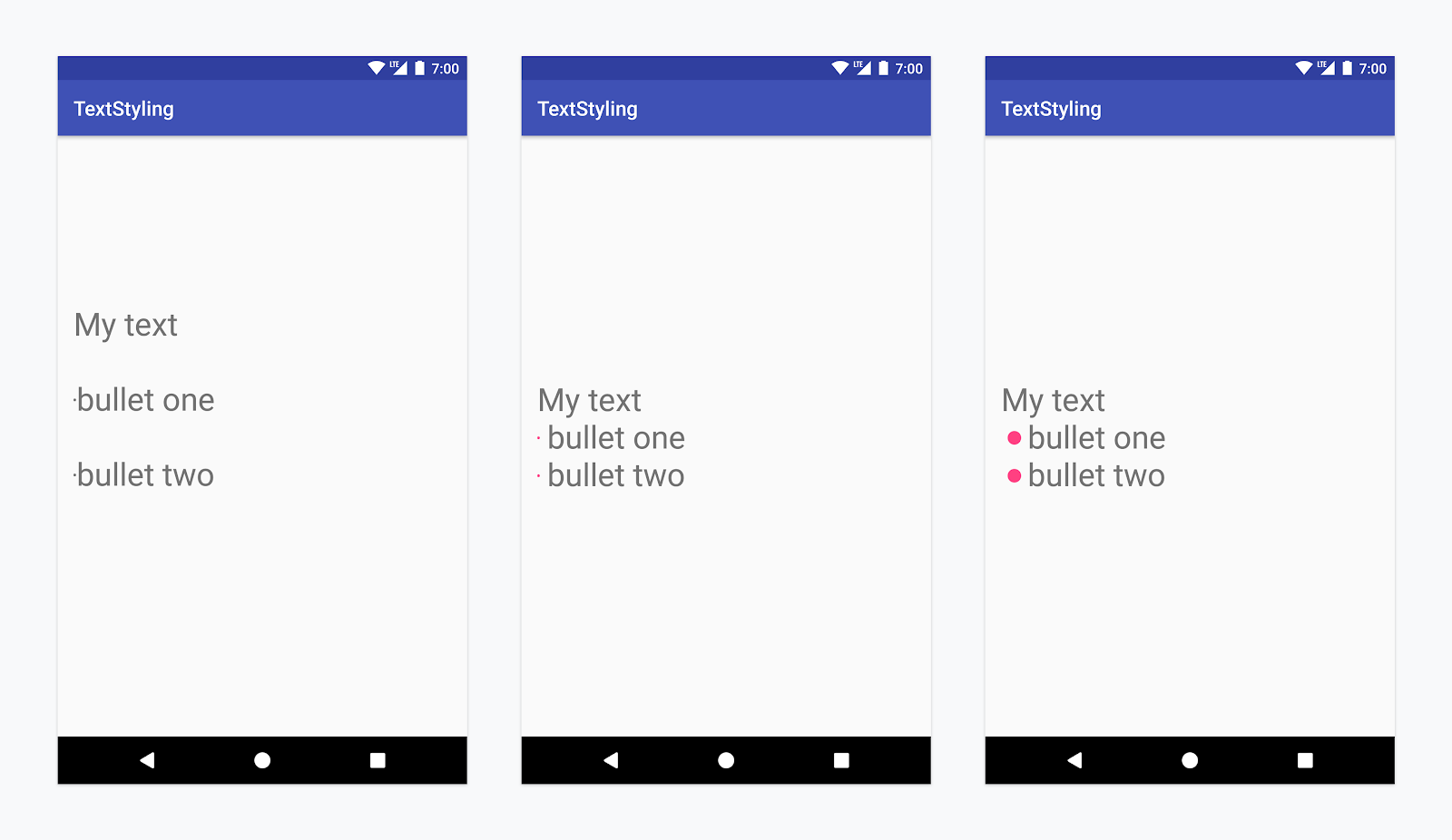The forming?storming?norming?performing model of group development was first proposed by Bruce Tuckman in 1965, who said that these phases are all necessary and inevitable in order for the team to grow, face up to challenges, tackle problems, find solutions, plan work, and deliver results. The theory remains a good explanation of team development and behavior.
The progression is:
- forming
- storming
- norming
- performing
 4 Stages of Team Formation
4 Stages of Team Formation
Forming
The team meets and learns about the opportunities and challenges, and then agrees on goals and begins to tackle the tasks. Team members tend to behave quite independently. They may be motivated but are usually relatively uninformed of the issues and objectives of the team. Team members are usually on their best behavior but very focused on themselves.
Mature team members begin to model appropriate behavior even at this early phase. The meeting environment also plays an important role to model the initial behavior of each individual. The major task functions also concern orientation.
Members attempt to become oriented to the tasks as well as to one another. Discussion centers on defining the scope of the task, how to approach it, and similar concerns. To grow from this stage to the next, each member must relinquish the comfort of non-threatening topics and risk the possibility of conflict.
- High dependence on leader for guidance and direction
- Little agreement on team aims other than those received from the leader
- Individual roles and responsibilities are unclear
- Leader must be prepared to answer lots of questions about the team?s purpose, objectives, and external relationships
- Processes are often ignored. Members test tolerance of system and leader.
- Leader directs.
Storming
This is the second stage of team development, where the group starts to sort itself out and gain each other?s trust. This stage often starts when they voice their opinions and, as a result of this, a conflict may arise between team members as power and status are assigned.
When the group members start to work with each other they start to learn about individual working styles and what it is like to work with each other as a team, it also identifies different hierarchy of status of positions in the group.
At this stage there is a positive and polite atmosphere and people are pleasant to each other and they have different feelings of excitement, eagerness and positiveness and others may have feelings of suspicion, fear and anxiety. The leader of the team will then describe the tasks to the group, describe the different behaviors to the group and how to deal and handle complaints.
- Decisions don?t come easily within group
- Team members vie for positions as they attempt to establish themselves in relation to other team members and the leader, who might receive challenges from team members
- Clarity of purpose increases but plenty of uncertainties persist.
- Cliques and factions form and there may be power struggles.
- The team needs to be focused on its goals to avoid becoming distracted byrelationships and emotional issues.
- Compromises may be required to enable progress.
- Leader coaches.
Norming
In this stage, all team members take the responsibility and have the ambition to work for the success of the team?s goals. They start tolerating the whims and fancies of the other team members. They accept others as they are and make an effort to move on.
The danger here is that members may be so focused on preventing conflict that they are reluctant to share controversial ideas.
Performing
- Agreement and consensus is largely formed among SCC members, who respond well to facilitation by leader.
- Roles and responsibilities are clear and accepted.
- Big decisions are made by group agreement. Smaller decisions may be delegated to individuals or small teams within group.
- Commitment and unity is strong.
- The team may engage in fun and social activities.
- The team discusses and develops its processes and working style.
- There is general respect for the leader and some of leadership is more shared by the team.
- Leader facilitates and enables.
Performing
By this time, they are motivated and knowledgeable. The team members are now competent, autonomous and able to handle the decision-making process without supervision. Dissent is expected and allowed as long as it is channeled through means acceptable to the team.
The team is more strategically aware; the team knows clearly why it is doing what it is doing.
- There is a focus on over-achieving goals, and the team makes most of thedecisions against criteria agreed with the leader.
- The team has a high degree of autonomy.
- Disagreements occur but now they are resolved within the team positively and necessary changes to processes and structure are made by the team.
- The team is able to work towards achieving the goal, and also to attend torelationship, style and process issues along the way.
- Team members look after each other.
- The team requires delegated tasks and projects from the leader.
- The team does not need to be instructed or assisted.
- Team members might ask for assistance from the leader with personal andinterpersonal development.
- Leader delegates and oversees.
work.
Articles for Scrum Roles
- What is Scrum Team?
- What is a Self-Organizing Team in Scrum?
- How Scrum Team Works? ? A Brief Guide
- How to be a Good Product Owner in Scrum Project?
- What is Product Owner?s Role in Scrum?
- Agile Development: How to Become a Qualified Scrum Master?
- What is Pig and Chicken in Scrum?
- Project Manager vs Scrum Master vs Project Owner
- What Are The Three Scrum Roles?
- What is a Scrum Master? The Role and Responsibilities
- What is Cross-Functional Team in Agile?

